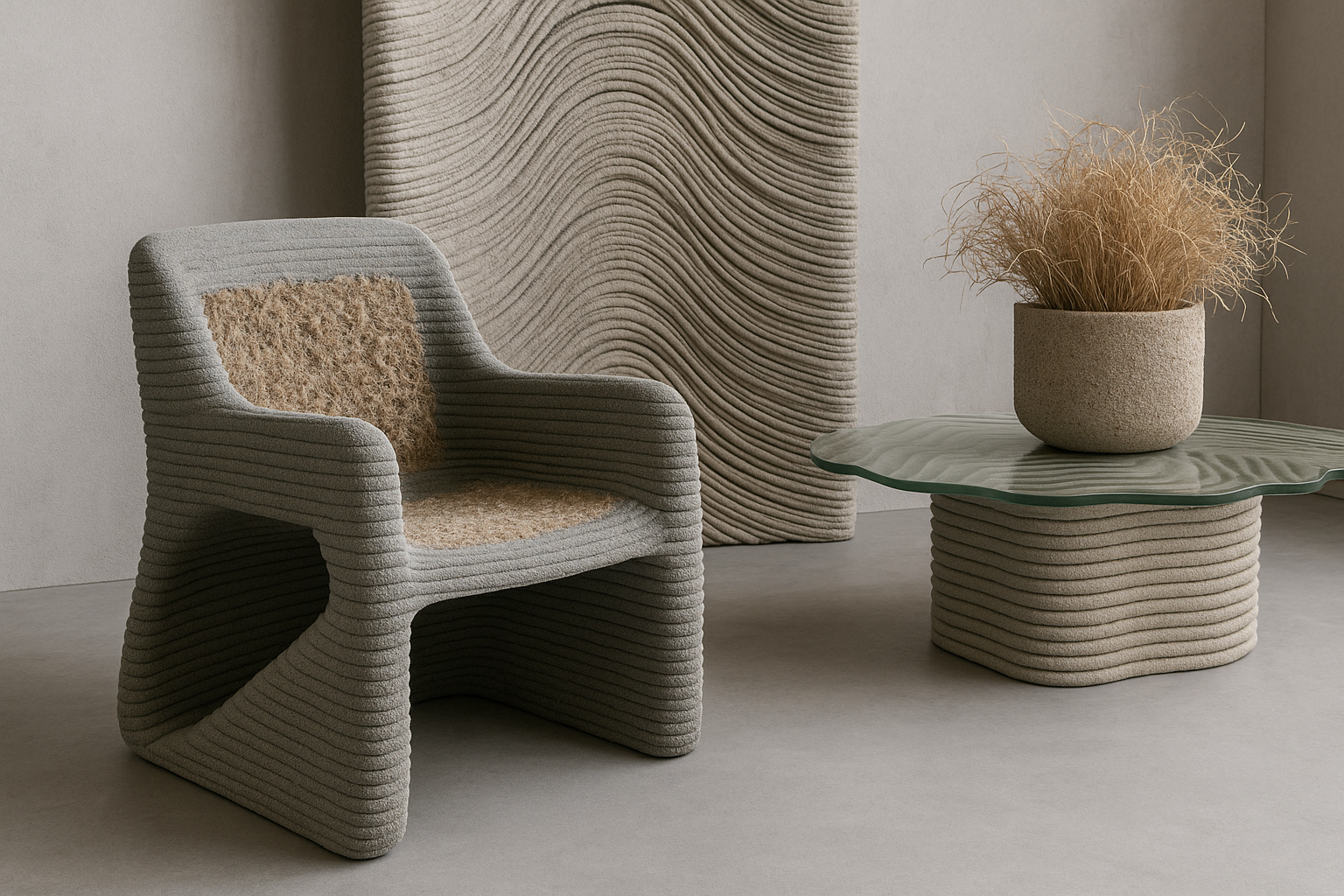Revolutionizing Construction: Integrating Recycled Mattress and Carpet Fibers into Concrete for Sustainable 3D Printing
In the quest for sustainable construction solutions, the integration of recycled materials into building practices has gained significant momentum. One innovative approach involves incorporating fibers from discarded mattresses and carpets into concrete mixtures. This method not only addresses environmental concerns but also enhances the structural properties of concrete, making it particularly suitable for large-scale 3D printing applications.
The Environmental Challenge of Mattress and Carpet Waste
Annually, millions of mattresses and carpets are discarded, contributing substantially to landfill waste. These items are challenging to recycle due to their composite materials, leading to environmental degradation. By repurposing the fibers from these products into concrete, we can divert significant waste from landfills and reduce the environmental impact of construction materials.
Enhancing Concrete with Recycled Fibers
Incorporating recycled mattress and carpet fibers into concrete not only addresses waste management issues but also improves the material's performance.
Improved Crack Resistance
Studies have shown that adding carpet fibers to concrete can reduce early-age shrinkage cracking by up to 30%, enhancing the durability and lifespan of concrete structures.
Enhanced Tensile Strength
The inclusion of synthetic fibers from carpets and mattresses can increase the tensile strength of concrete by approximately 40%, making it more resilient under tension and reducing the likelihood of structural failures.
Increased Impact Resistance
Fiber-reinforced concrete exhibits better energy absorption, which translates to improved impact resistance. This makes it suitable for applications where the material may be subjected to dynamic loads or impacts.
Lightweight Applications
Using recycled fibers can reduce the density of concrete, leading to lighter structures without compromising strength. This is particularly beneficial in applications where weight reduction is crucial, such as in modular construction or in areas with load-bearing limitations.
Synergy with Large-Scale 3D Printing
The advent of 3D printing in construction has opened new avenues for sustainable building practices. The use of fiber-reinforced concrete in 3D printing offers several advantages:
-
Enhanced Buildability: The addition of fibers improves the rheological properties of concrete, making it more suitable for extrusion-based 3D printing processes.
-
Structural Integrity: Fiber-reinforced concrete exhibits improved ductility and toughness, essential for the stability of 3D-printed structures.
-
Sustainability: Utilizing recycled fibers aligns with the eco-friendly ethos of 3D printing, reducing the carbon footprint of construction projects.
Economic and Environmental Benefits
Cost-Effectiveness
Utilizing recycled fibers can lower material costs, as these fibers are often less expensive than traditional reinforcement materials. Additionally, reducing the need for virgin materials can lead to savings in resource extraction and processing.
Energy Efficiency
The production of recycled fibers consumes less energy compared to manufacturing new synthetic fibers. Incorporating these into concrete contributes to the overall reduction in energy consumption in the construction industry.
Sustainability and Regulatory Compliance
Using recycled materials aligns with sustainable building practices and can help in meeting environmental regulations and certifications, such as LEED. This not only benefits the environment but also enhances the marketability of construction projects.
Practical Considerations
For successful implementation, it's essential to ensure proper processing of recycled fibers to maintain consistency and quality. This includes cleaning, sizing, and treating the fibers to enhance their compatibility with concrete mixtures. Moreover, optimizing the proportion of fibers in the mix is crucial to achieve the desired balance between workability and mechanical properties.
Conclusion
Integrating recycled mattress and carpet fibers into concrete production presents a multifaceted solution to environmental and structural challenges in the construction industry. This approach not only mitigates waste and reduces environmental impact but also enhances the performance of concrete, leading to more durable and sustainable structures. As research and technology advance, the adoption of such innovative materials is poised to become a standard practice in sustainable construction, particularly in the realm of large-scale 3D printing.
For more information on sustainable construction practices and innovative materials, feel free to contact us or explore our other resources.



Leave a comment
This site is protected by hCaptcha and the hCaptcha Privacy Policy and Terms of Service apply.